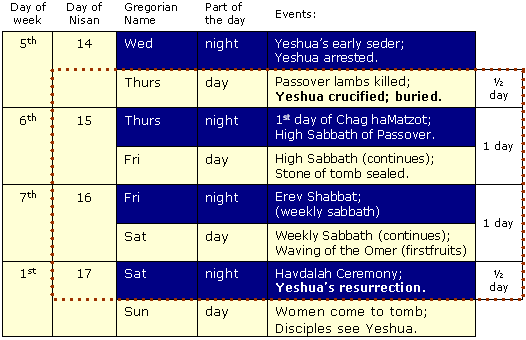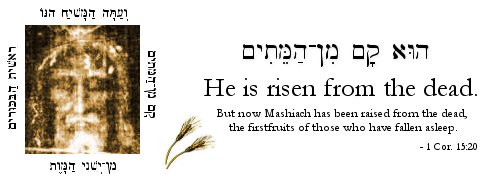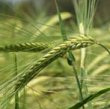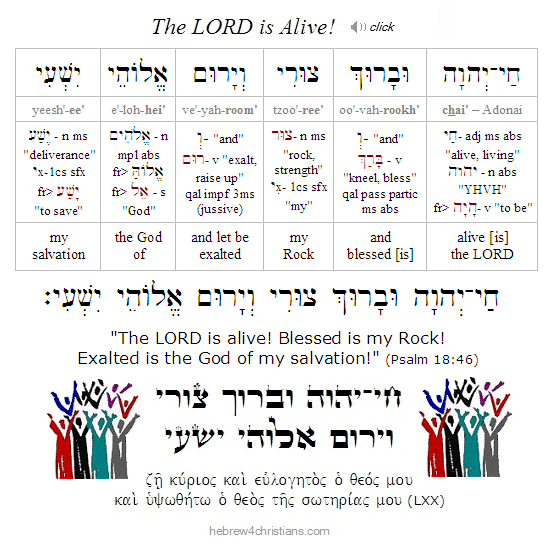|
|
 |
 |
 |
|
Yom HaBikkurim -
|
|
|
|
Messiah as the First of the Harvest...
|
|
|
|
 |
 |
 |
|
The Day of Firstfruits...
|
|
|
|
The day following the first day of Unleavened Bread is called Yom HaBikkurim (ЧҷЧ•Ц№Чқ Ч”Ц·Ч‘ЦјЦҙЧӣЦјЧ•ЦјЧЁЦҙЧҷЧқ), "the Day of Firstfruits," or Reshit Ha'Katzir (ЧЁЧҗЧ©ЧҷЧӘ Ч”Ч§ЧҰЧҷЧЁ) the "first of the harvest." In ancient times, on this day a sheaf (omer) of barley (the first grain crop to ripen) was waved before the LORD in a prescribed ceremony to mark the start of the counting of the omer, thereby initiating the forty nine day countdown to the jubilee harvest festival of Shavuot:
|
|
|
 |
 |
|
And the LORD spoke to Moses, saying, "Speak to the people of Israel and say to them, 'When you come into the land that I give you and reap its harvest, you shall bring the sheaf (omer) of the first (reshit) of your harvest (katzir) to the priest, and he shall wave the sheaf before the LORD, so that you may be accepted. On the day after the Sabbath the priest shall wave it. And on the day when you wave the sheaf, you shall offer a male lamb a year old without blemish as a burnt offering to the LORD.' (Lev. 23:9-12)
In other words, on this day the priest would wave a sheaf (omer) of green barley of the new harvest before the LORD (north, south, east, then west) as a symbolic gesture of dedicating it to Him. A male lamb was then sacrificed as a burnt offering to the LORD (olah) along with a minchah (unleavened bread mixed with oil) and wine (Lev. 23:13). Only after the wave offering was performed, could the crop could begin to be used (Lev. 23:14).
It is altogether remarkable that on this day a defect-free male lamb was to be offered along with bread and wine - the very symbols Yeshua used to recall His sacrifice...
|
 |
 |
 |
 |
 |
|
 |
 |
 |
 |
 |
 |
 |
 |
 |
 |
 |
|
When was the Wave Sheaf Offering Made?
|
|
|
|
There is some controversy about precisely when the wave offering (called tenufat HaOmer) was performed, since the phrase "the day after the Sabbath" can refer to either:
- Sunday (or Yom Rishon). This was the interpretation of the (corrupt) Sadducees. The Wave Offering would occur on the first Sunday after the regular weekly Sabbath.
Note: Some have argued that since the Sadducees controlled the Second Temple worship schedule, the Wave Offering would have occurred on the Sunday following the weekly Sabbath. However, if this were so, it would not help make the case that the Resurrection of Yeshua occurred at this time, since the gospels state that Yeshua was raised before the women discovered Him missing from the tomb early on Sunday morning (Matt 28:1; Mark 16:2, Luke 24:1, John 20:1). In other words, the time of the resurrection of Yeshua and the time of the Wave Offering were not coincidental, since the wave offering occurred later in the day.
- The day following the "High" Sabbath of the first day of Unleavened Bread (a "High" Sabbath is a day of shabbaton (rest) that may occur on any day of the week besides the weekly Sabbath day of Saturday). This is the position of the Pharisees and Orthodox Judaism. The wave offering would occur on Nisan 16, the day following the High Sabbath of the first day of Unleavened Bread (Josh. 5:11).
|
|
|
Chronology of the Death, Burial and Resurrection of Yeshua
|
|
|
|
Here is a tentative chronology of the key events surrounding Yeshua's death, burial and resurrection. Yeshua was crucified on Nisan 14 (a Thursday), exactly when the Passover Lambs were being offered at the Temple, and He rose from the dead three days and nights later, on the night of Nisan 17 (i.e., before sunrise on Sunday):
- Nisan 14 evening - Yeshua's early Seder (Wed. night)
- Nisan 14 daytime - "Preparation day" (Luke 23:54; Mark 15:42) for Passover. Yeshua died Thursday afternoon at the same time that the korban Pesach (Passover Lamb) was prepared (sacrificed) at the Temple and was buried before sundown.
- Nisan 15 evening - The High Sabbath of Passover begins (the actual Seder night)
- Nisan 15 daytime - The High Sabbath of Passover (Friday before sundown)
- Nisan 16 evening - The Weekly Sabbath begins (Friday after sundown)
- Nisan 16 daytime - Weekly Sabbath, waving of the omer (Saturday)
- Nisan 17 evening - Yeshua was resurrected some time before sunrise on Sunday.
- Nisan 17 daytime - Women bring spices to the tomb early in the morning. Disciples encounter risen Messiah.
To understand this reckoning, you must remember that a Jewish day starts at sundown and ends at twilight the following day. If Yeshua was on the cross on Nisan 14 (during the time of sacrifice of korban Pesach at the Temple) and was raised after three days and nights, we then would have the following:
|
|
|
|
 |
|
|
|
How to Read this Chart
First it is vital to understand that the Jewish day begins at sundown and ends at twilight the following day... The chart above therefore indicates the following chronology:
- Yeshua was crucified and buried on Nisan 14, a Thursday afternoon (i.e., 1/2 day). This was also the "Preparation Day" for the Sabbath of Passover that would begin after sundown that same day.
- He was in the tomb Nisan 15 (from sundown until twilight Fri. = 1 day) and
- He was in the tomb Nisan 16 (from sundown until twilight Sat. = 1 day) and
- He was also in the tomb on Nisan 17 (i.e., after sundown Sat. = 1/2 day) BUT
- He later rose from the dead that day Nisan 17 (i.e., before sunrise Sun. morning)
If you add these up you will get 1/2 + 1 + 1 + 1/2 = 3 days and nights (Matt. 12:40). He therefore was crucified on Thursday, Nisan 14 (before sundown) and was resurrected on Sunday, Nisan 17 (before sunrise) on the third day (Luke 24:45-46). The disciples then encountered the risen Lord on Nisan 17, a Sunday morning (Matt. 28:1-10).
It is also important to understand that there are more Sabbaths in the Jewish year than there are "seventh days" on the Jewish calendar. For instance, Passover and the other holidays are regarded as Sabbaths, and therefore in Mark's gospel the women are said to have come to the tomb after the Sabbaths (i.e., ПғОұОІОІбҪұП„ПүОҪ, a plural noun) which indicates that both Passover (Nisan 15) and the following day (i.e., Nisan 16, the seventh day of the week) were regarded as Sabbath days (see the Greek text for Mark 16:2).
Ч—Ц·ЧҷЦҫЧҷЦ°Ч”Ч•ЦёЧ” Ч•ЦјЧ‘ЦёЧЁЧ•ЦјЧҡЦ° ЧҰЧ•ЦјЧЁЦҙЧҷ
Ч•Ц°ЧҷЦёЧЁЧ•ЦјЧқ ЧҗЦұЧңЧ•Ц№Ч”ЦөЧҷ ЧҷЦҙЧ©ЧҒЦ°ЧўЦҙЧҷ
chai-Adonai В· oo'vaВ·rookh В· tzooВ·ree
veВ·yaВ·room В· EВ·loВ·hei В· yeeshВ·ee

"The LORD lives, and blessed be my rock,
and exalted is the God of my salvation!" (Psalm 18:46)
Hebrew Study Card

Hebrew Lesson:
Psalm 18:46 Hebrew reading:
|
|
|
Yeshua our First Fruits...
|
|
|
|
Although not happening coincidentally, the Wave Offering and the Resurrection of Yeshua are linked together prophetically by the Apostle Paul:
But in fact Messiah has been raised from the dead, the firstfruits of those who have fallen asleep. For as by a man came death, by a man has come also the resurrection of the dead. For as in Adam all die, so also in Christ shall all be made alive. But each in his own order: Messiah the firstfruits, then at his coming those who belong to Him. (1 Cor. 15:20-23)

Here the apostle clearly links the firstfruit offering with the resurrection of Yeshua our Mashiach. Yeshua's resurrection was like a "wave offering" presented before the Father as the "firstfruits" of the harvest to come! Moreover, Yeshua presented His firstfruits offering to the Father on this day:
The tombs also were opened. And many bodies of the saints who had fallen asleep were raised, and coming out of the tombs after his resurrection they went into the holy city and appeared to many. (Matt. 27:52-53)
Our Lord offered to the Father the "early crops" of what will be an overwhelming harvest at the end of the age (acharit hayamim).
Yeshua is the first-begotten of the Father (Heb. 1:6); the Firstborn of Creation (Col. 1:15-16); the first-begotten of the dead (Rev. 1:5) and is the Firstfruits of those who are to be resurrected (1 Cor. 15:20-23). Baruch HaShem. And just as He is our Firstfruits, so "He chose to give us birth through the word of truth, that we might be a kind of first fruits of all he created" (James 1:18).
General Themes of the Season
- Pesach represents our salvation and deliverance by the sacrifice of the Lamb of God, Yeshua the Mashiach. We are justified by trusting in the sacrificial blood of the Lamb of God (Rev. 7:14; 2 Cor. 5:21).
- Chag HaMatzot represents our sanctification as we rid ourselves of the old leaven of "Egypt" and die to the carnal nature. In fact, this is represented by the burial of the Mashiach and our identification with His mortification.
- Reshit Katzir represents the resurrection of Yeshua our Mashiach and our future glorified state as part of the coming harvest of God at the end of the age.

|
|
|
|
Our LORD Yeshua -- the Killer of death; the Slayer of the Serpent; the Victory of God's love for us! ЧҷЦ°Ч”ЦҙЧҷ Ч©ЧҒЦөЧқ ЧҷЦ°Ч”Ч•ЦёЧ” ЧһЦ°Ч‘ЧЁЦёЧҡЦ° - "Blessed be the Name of the Lord."
Ч•Ц°ЧўЦ·ЧӘЦјЦёЧ” Ч”Ц·ЧһЦјЦёЧ©ЧҒЦҙЧҷЧ—Ц· Ч§ЦёЧқ ЧһЦҙЧҹЦҫЧ”Ц·ЧһЦјЦөЧӘЦҙЧҷЧқ
ЧЁЦөЧҗЧ©ЧҒЦҙЧҷЧӘ Ч”Ц·Ч‘ЦјЦҙЧӣЦјЧ•ЦјЧЁЦҙЧҷЧқ ЧһЦҙЧҹЦҫЧҷЦ°Ч©ЧҒЦөЧ ЦөЧҷ Ч”Ц·ЧһЦјЦёЧ•Ц¶ЧӘ
veВ·atВ·tah В· haВ·maВ·shi'В·ach В· kam В· meen В· haВ·meВ·teem
reВ·sheet В· haВ·bee'В·kooВ·reem В· meen-yeВ·sheВ·nei В· haВ·ma'В·vet

But now Messiah has been raised from the dead,
the firstfruits of those who have died (1 Cor. 15:20).
Download Study Card
|
|
|
|
Resurrection Blessing
|
|
|
|
The resurrection of Yeshua the Messiah demonstrates that His sacrifice for our sins was accepted by God. When God raised Yeshua from the dead, He "absolved" the Substitute of the sins He bore. The sin imputed to Him was "left in the grave," so to speak, and the resurrection therefore confirms Yeshua's triumphant word, tetelestai: "It is finished" (John 19:30; Matt. 27:50). The resurrection declares that the King of all kings has pardoned you and constitutes proof that God has accepted Messiah's payment for your sins.
Ч‘ЦјЦёЧЁЧ•ЦјЧҡЦ° Ч”ЦёЧҗЦұЧңЧ”ЦҙЧҷЧқ ЧҗЦІЧ‘ЦҙЧҷ ЧҗЦІЧ“Ч ЦөЧҷЧ Ч•Цј ЧҷЦөЧ©ЧҒЧ•ЦјЧўЦ· Ч”Ц·ЧһЦјЦёЧ©ЧҒЦҙЧҷЧ—Ц·
ЧҗЦІЧ©ЧҒЦ¶ЧЁ Ч‘ЦјЦ°ЧЁЧ‘ ЧЁЦ·Ч—ЦІЧһЦёЧҷЧ• Ч”Ч•Ц№ЧңЦҙЧҷЧ“ ЧҗЧ•Ц№ЧӘЦёЧ Ч•Цј ЧһЦөЧ—ЦёЧ“ЦёЧ©ЧҒ
ЧңЦ°ЧӘЦҙЧ§Ц°Ч•ЦёЧ” Ч—Ц·ЧҷЦјЦёЧ” Ч‘ЦјЦҙЧӘЦ°Ч—ЦҙЧҷЦјЦ·ЧӘ ЧҷЦөЧ©ЧҒЧ•ЦјЧўЦ· Ч”Ц·ЧһЦјЦёЧ©ЧҒЦҙЧҷЧ—Ц· ЧһЦҙЧҹ Ч”Ц·ЧһЦјЦөЧӘЦҙЧҷЧқ
baВ·rookh В· ha-EВ·loВ·heem В· aВ·vee В· aВ·doВ·nei'В·noo В· YeВ·shu'В·a В· haВ·maВ·shee'В·ach
aВ·sher В· beВ·rov В· raВ·chaВ·mav В· hoВ·leed В· oВ·ta'В·noo В· meВ·chaВ·dash
leВ·teekВ·vah В· chaiВ·yah В· beetВ·cheeВ·yat В· YeВ·shu'В·a В· haВ·maВ·shee'В·ach В· meen В· haВ·meВ·teem

"Blessed be God, the Father of our Lord Yeshua the Messiah,
who, according to His great mercy, has caused us to be born again
to a living hope because of the resurrection of Yeshua the Messiah from the dead."
О•бҪҗО»ОҝОіО·П„бҪёПӮ бҪҒ ОёОөбҪёПӮ ОәОұбҪ¶ ПҖОұП„бҪҙПҒ П„ОҝбҝҰ ОәП…ПҒбҪ·ОҝП… бјЎОјбҝ¶ОҪ бҫҪОҷО·ПғОҝбҝҰ О§ПҒО№ПғП„ОҝбҝҰ,
бҪҒ ОәОұП„бҪ° П„бҪё ПҖОҝО»бҪә ОұбҪҗП„ОҝбҝҰ бј”О»ОөОҝПӮ бјҖОҪОұОіОөОҪОҪбҪөПғОұПӮ бјЎОјбҫ¶ПӮ
Оөбј°ПӮ бјҗО»ПҖбҪ·ОҙОұ О¶бҝ¶ПғОұОҪ ОҙО№бҫҪ бјҖОҪОұПғП„бҪұПғОөПүПӮ бҫҪОҷО·ПғОҝбҝҰ О§ПҒО№ПғП„ОҝбҝҰ бјҗОә ОҪОөОәПҒбҝ¶ОҪ
1 Peter 1:3
Download Study Card
|
|
|
|
A Note about Chag HaBikkurim
|
|
|
|
The Hebrew term bikkurim derives from the same root as bekhor - firstborn. In the Torah, the general principle that the firstborn of man (and beast) belonged to the LORD is also applied to the first fruits to ripen each agricultural season, beginning with a sheaf of the new barley harvest (omer) on Reishit Katzir, and culminating in the celebration of Shavuot, also called Chag haBikkurim вҖ” "the first fruits festival." In other words, Reishit Katzir is a picture of the resurrection of the Messiah (Yom HaBikkurim) whereas Shavuot (Chag HaBikkurim) represents the the giving of the Torah at Sinai and the advent of the Ruach HaKodesh (Holy Spirit) at Zion (Acts 2:1-4).
Nisan 17 in Jewish History
According to the Torah and traditional Jewish interpretation, other events that occurred on Nisan 17 include the following:
- Noah's Flood Ended: Gen. 8:4. Note that the seventh month was later designated as the first month at the time of the Exodus (Ex. 12:2). Our new creation in Messiah began on the anniversary of the rebirth of the world.
- Israel Crossed the Red Sea: Some sages believe that Israel crossed Yam Suf on this date. They reason that from the crossing of the sea to the arrival at Sinai was 47 days (Exod. 19). Three days later would mark the 50th day as the original occasion of Shavuot and the commemoration of the giving of the Torah.
- The Wave Sheaf offering was made at the Mishkan (and later, at the Temple). This was the first fruit of the Spring barley harvest. This is the holiday of Reshit Chatzir.
- Haman was hanged. According to various Jewish authorities, the villain Haman was hanged on the gallows he had specifically prepared for Mordechai the Jew on this date.
- Yeshua was resurrected. In 1 Cor. 15:20-23 Paul clearly links the firstfruit offering with the resurrection of Yeshua our Messiah. Yeshua's resurrection was like a "wave offering" presented before the Father as the "firstfruits" of the harvest to come! Moreover, Yeshua presented His firstfruits offering to the Father on this day (Matt. 27:52-53). Yeshua is the first-begotten of the Father (Heb. 1:6); the Firstborn of Creation (Col. 1:15-16); the first-begotten of the dead (Rev. 1:5) and is the Firstfruits of those who are to be resurrected (1 Cor. 15:20-23). Barukh HaShem. And just as He is our Firstfruits, so "He chose to give us birth through the word of truth, that we might be a kind of first fruits of all he created" (James 1:18).
What about "Good Friday?"
Though the Gregorian calendar varies every year, originally Yeshua's suffering on the Cross would have been Thursday afternoon -- certainly not on "Good Friday." Moreover, His resurrection would have occured on the following Saturday night -- not on Sunday morning when the tomb was already found empty.... Nonetheless, the most important thing -- the matter of "first importance" -- is that Messiah 1) died for our sins; 2) was buried; and 3) was raised the third day (1 Cor. 15:3-4). Good people sometimes argue over the details but risk missing the greater point. Yeshua completely atoned for our sins and His resurrection validated that God the Father accepted His sacrifice. It was God the Father who raised Yeshua in victory (Gal. 1:1, Rom. 10:9), and those who trust in Him are justified by faith. Yeshua "was delivered for our offenses, and raised again for our justification" (Rom. 4:25). As Yeshua the Messiah said, "Because I am alive, you also will live" / ЧӣЦјЦҙЧҷЦҫЧҗЦІЧ ЦҙЧҷ Ч—Ц·Чҷ Ч•Ц°ЧӣЦөЧҹ Ч’ЦјЦ·ЧқЦҫЧҗЦ·ЧӘЦјЦ¶Чқ ЧӘЦјЦҙЧ—Ц°ЧҷЧ•ЦјЧҹ / бҪ…П„О№ бјҗОібҪј О¶бҝ¶ ОәОұбҪ¶ бҪ‘ОјОөбҝ–ПӮ О¶бҪөПғОөП„Оө (John 14:19).
Related Topics:
|
|
|
|
Hebrew for Christians
Copyright © John J. Parsons
All rights reserved.
|
|
|
|
 |
|
|
|
|
|
|






